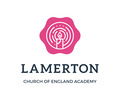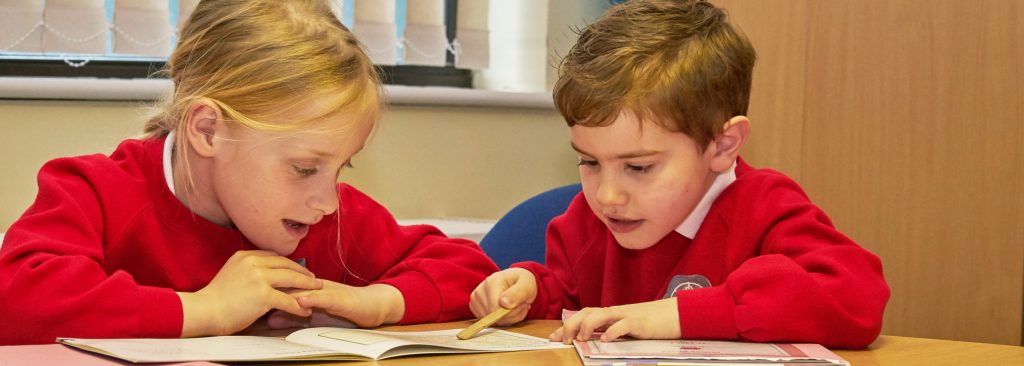


Reading:
Reading is a vital life skill and all staff actively promote a love of reading through praise, encouragement, celebrating success and reward schemes. By teaching the children at Lamerton to read at age appropriate levels they will be able to enjoy books and other written media, to access information and to follow written instructions in all curriculum areas and the environment around them. Lamerton provides many and varied opportunities for the teaching of reading skills, both explicitly in English related sessions and across the full curriculum through whole class, shared reading, guided reading, individual reading and independent reading.
Long Term Reading Skills and Knowledge Y1
Long Term Reading Skills and Knowledge Y2
Long Term Reading Skills and Knowledge
Y4 Long Term Reading Skills and Knowledge
Y5 Long Term Reading Skills and Knowledge
Y6 Long Term Reading Skills and Knowledge
Whole Class Reading
At Lamerton we use DERIC as a whole class approach to teach reading skills from Y1 upwards, which equips pupils with the necessary skills to be successful readers. It focuses on building fluency and embedding comprehension skills with direct, taught sessions. DERIC stands for; Decode, Explain, Retrieve, Interpret and Choice. These are all closely linked to the assessed strands in the end of key stage assessments.
DERIC:
D for decode – this is the sounding out and blending of words and then becoming more confident with reading words on sight.
E for explain – asking the children to explain the meaning of words and being able to explain what is happening in the text they have read.
R – for retrieve – asking the children questions where the answer can be found in the text or pictures. For example: How many cups are on the table? What colour is the bear’s hat?
I – for interpret – the children are to use their inference skills to use clues in the text and what they already know to make suggestions about what they have read. (Using ‘because’ in their responses). For example: Why do you think the bear was crying?
C – for choice – asking the children questions about why the author has chosen to lay out the text in a particular way.

When teaching, there is one learning objective for the whole class based around the same text. The activities or level of support is adapted for different abilities so that all children can access the learning objective and be challenged. Sometimes, texts are part of a class book or at other times they are a poem or non-fiction article depending on the writing focus. The whole class reading approach supports rapid progress. Research suggests this is due to exposure to higher-level questions and answers. Pictorial stimulus or activities which are designed to have a comprehension focus but reduce the amount of decoding can also be used to support SEND/EAL pupils.
At Lamerton, we promote the use of a variety of carefully selected literature that is matched to the attainment level of pupils. These texts have subtle challenge and allow pupils to reinforce fluency, decoding and comprehension skills regularly.
Additional opportunities are provided for pupils to practise and extend reading in other subjects.
School Trust Approach to Writing
Writing Skills and Knowledge Y1 Long Term
Writing Skills and Knowledge Y2 Long Term
Writing Skills and Knowledge Y3 Long Term
Writing Skills and Knowledge Y4 Long Term
Phonics is a way of teaching children to read quickly and skilfully. They are taught how to:
We have our own systematic synthetic phonics programme based on ‘Letters and Sounds’. It is called ‘Little Wandle’.
Children can use their knowledge to ‘de-code’ new words that they hear or see. This is the first important step in learning to read.
Research shows that when phonics is taught in a structured way – starting with the easiest sounds and progressing through to the most complex – it is the most effective way of teaching young children to read.
It is particularly helpful for children aged 5 to 7. Almost all children who receive good teaching of phonics will learn the skills they need to tackle new words. They can then go on to read any kind of text fluently and confidently, and to read for enjoyment.
Here are some of the key terms you may come across:
Phoneme – the smallest unit of sound that can be extracted from a word
Grapheme – the written letters representing a phoneme
Digraph- two letters that work together to make the same sound
Trigraph – Three letters that work together to make the same sound
Split digraph – Two letters that work together to make the same sound, separated by another letter
Tricky words- words which cannot be decoded or broken down-they break the rules!
Blending- joining sounds to make words
Segmenting- breaking words into sounds
Here is the programme overview:
Programme-Overview_Reception-and-Year-1
These grapheme mats could be useful at home:
‘The size of a child’s vocabulary is an accurate predictor of academic achievement and even upward mobility over the course of a lifetime’ Hirsh 2013.
There are three tiers of vocabulary that encompass all the words we can learn.
Tier 1 words are those words used in everyday speech that pupils generally have in their long term memories e.g. table, clock, run, food, drive.
Tier 2 words can have multiple meanings in different contexts. Tier 2 words need to be explicitly taught.
Tier 3 words are those that are more specific to content areas e.g. photosynthesis.
Beck, McKeown & Omanson (1987) developed the concept of ‘word tiers’. This can help us select target words to teach.
Tier 3 words: low frequency, highly specialised, domain-specific, e.g.pyroclastic, fascism, photosynthesis, and rare words.
Tier 2 words: more frequently occurring, e.g. sensitive, significant; characterise written text – not so common in everyday conversation; include words with wide application in different contexts across different domains – have ‘high utility for literate language users’ – and it’s these that are particularly good for explicit instruction.
Tier 1 words: everyday, basic, familiar; typically appear in oral conversations so children often exposed to them at high frequency from early on.
We have developed tier 3 vocabulary for each curriculum area:
Vocabulary Progression in Science
Vocabulary Progression in R.E.
Vocabulary Progression in music
Vocabulary Progression in history
Vocabulary Progression in geography.docx
Vocabulary Progression in computing (1)
Vocabulary Progression in art (1)